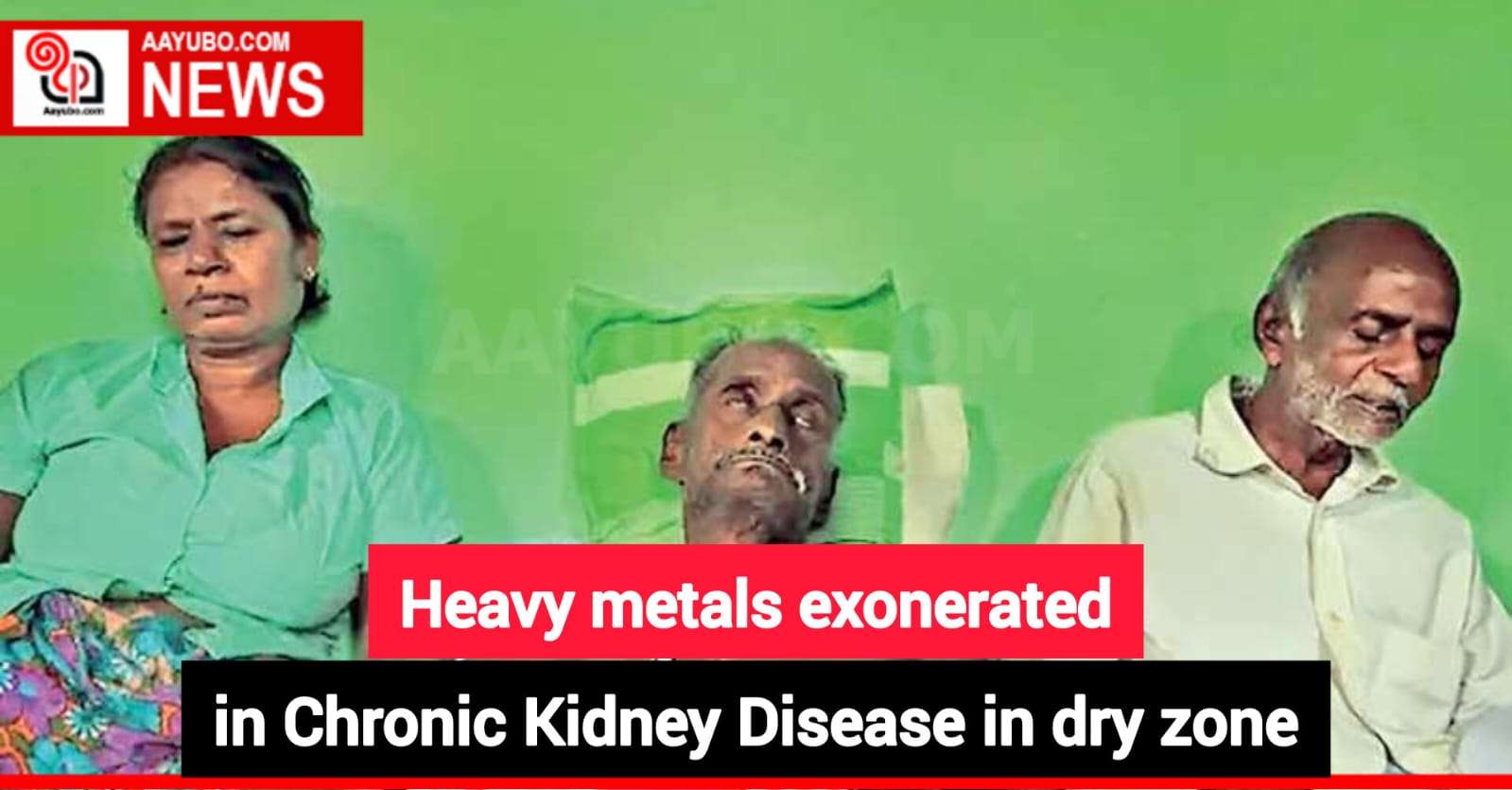Heavy metals exonerated in Chronic Kidney Disease in dry zone

In Sri Lanka's dry zone, a long-standing issue known as Chronic Kidney Disease of Unknown Etiology (CKDu) has affected communities for the past three decades. This disease primarily affects individuals in agriculture and has put a practical, stray, significantly strained system. The cause of CKDu has been debated among experts, with many attributing it to toxic heavy metals like cadmium and arsenic in agrochemical-contaminated groundwater. However, a groundbreaking study conducted by a team of Chinese scientists has presented a new perspective that could reshape our understanding of CKDu.
The Chinese scientists collaborated with the Joint Research Centre at the University of Peradeniya, with support from the Chinese Academy of Sciences, to conduct an extensive research project in Sri Lanka's North Central Province. Their investigation focused on analyzing the quality of groundwater. It brought to light an unexpected finding: high calcium and fluoride ions concentrations.
Professor Min Yang, a vital research team member, provided exclusive insights into their journey. In 2014, prompted by the concerns expressed by their Sri Lankan counterparts about the prevalence of CKDu in the dry zone, the Chinese scientists embarked on a mission driven by a shared determination to uncover the truth. Through collaboration and joint efforts, they made groundbreaking discoveries that challenged their understanding CKDu.
The significance of their findings must be considered. Water samples collected from the North Central Province revealed shocking calcium levels, reaching up to 200 mg per litre, and fluoride concentrations of 2-3 mg per litre—both exceeding acceptable limits.
Their meticulous exploration revealed a compelling case linking CKDu to the hardness of water and the presence of excessive fluoride. Prof. Yang emphasized the seriousness of the issue, describing it as a “severe problem” afflicting the dry zone’s vulnerable population. Through inter-disciplinary collaboration, the team meticulously pieced together evidence, building a robust case that elevated calcium and fluoride levels in groundwater, surpassing certain thresholds, are key factors contributing to this grave health hazard.
The significance of their findings must be considered. Water samples collected from the North Central Province revealed shocking calcium levels, reaching up to 200 mg per litre, and fluoride concentrations of 2-3 mg per litre—both exceeding acceptable limits. This contrasted starkly with samples from other parts of the country, shedding light on the localized nature of the problem.
CKDu’s impact on Sri Lanka has been staggering. Over three decades ago, its discovery thrust the nation into a public health crisis, with rural farming communities in the dry zone bearing the brunt of its devastation. The government has faced an uphill battle, grappling with soaring healthcare costs and a significant loss of productivity from affected individuals who would otherwise contribute to the national economy.
CKDu stands distinct from other chronic kidney diseases, with no direct correlation to common risk factors such as obesity, hypertension, diabetes, or even snake bites. This elusive nature has confounded researchers for years. However, according to their unpublished research results, the simultaneous presence of calcium and fluoride ions might be the main reason for the high CKDu prevalence rates from a mere two per cent to an alarming 15 per cent in certain areas.
The urgency to address this crisis cannot be overstated. The World Health Organization (WHO) has issued recommendations for providing safe water to the CKDu-affected regions, aligning with Sri Lanka’s commitment to achieving the UN Sustainable Development Goals by 2030, prioritizing safe water and sanitation.
Recognizing the limitations of the national water supply grid in reaching all affected areas, decentralized water-treatment plants have emerged as a practical solution, particularly in rural villages where centralized systems prove unsustainable.
While concerns regarding the excessive use of agrochemicals have long dominated the discourse surrounding CKDu, Prof. Yang dismisses this notion. Drawing on his team’s research, he counters groundwater contamination by heavy metals from industrial chemical waste does not exist in Sri Lanka as in other countries. Furthermore, the presence of CKDu in certain parts of Latin America is attributed to a natural chemical called ‘aristolochic acid.’ These revelations challenge the previously held assumptions, urging a re-evaluation of strategies for tackling CKDu.
As the total affected population surpasses 400,000 and the death toll exceeds 20,000, the need for immediate action looms large. The Chinese experts advocate for establishing community-based water-treatment systems, incorporating a modified electro-dialysis technology to remove hazardous ions. These solutions offer promising avenues for providing safe drinking water to small villages in the affected regions at a low cost, addressing maintenance challenges and ensuring long-term access to clean water.
“We came to Sri Lanka in 2014 because of CKDu. Sri Lankan colleagues informed us about this serious kidney disease in the dry zone. They said it might be associated with groundwater quality. That is why we started working with our Sri Lankan colleagues,” he said.
CKDu’s impact on Sri Lanka has been staggering. Over three decades ago, its discovery thrust the nation into a public health crisis, with rural farming communities in the dry zone bearing the brunt of its devastation.
“Groundwater can be contaminated with heavy metals if there are a lot of industrial chemical wastes. In your country, we don’t find such industries. Also, agrochemicals are used in other countries. But, this problem does not exist,” he said.
Responding to a query about the prevalence of it in some parts of Latin America, he said a natural chemical triggered it. Since most areas of the dry zone are not covered by the national water supply grid of Sri Lanka, he rebuffed it, saying it is triggered by a natural chemical called ‘aristolochic acid’.
The battle against CKDu is far from over, but the findings of the Chinese research team serve as a beacon of hope in a sea of uncertainty. By challenging prevailing beliefs and shedding new light on the complex interplay of water quality and CKDu, they have opened doors to innovative approaches that can alleviate the suffering of countless individuals and safeguard the future of Sri Lanka’s dry zone communities. As the nation strives towards sustainable development goals, the pursuit of safe water and improved healthcare in the affected areas must remain at the forefront, guiding efforts to eradicate this debilitating disease.
941 Views






Comments